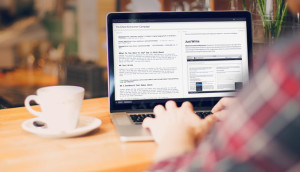When it comes to sharing your ideas and thoughts with the global audience, there is no better way to do it than by writing a blog. With WordPress, starting your own blog or website is an easy task, thanks to some of its impressive features and awesome plugins.
But, a hard reality of managing a WordPress blog or in fact a blog on any platform is that there are high chances that your blog could get hacked. So, what do you do in such a scenario? Here is an insight as to what you need to do.
Being Hack Ready
Remember, that none of the blogging platforms, no matter how secure they seem to be, are 100% hack proof. You need to be always ready to face a probable hack. High end security, a trustworthy backup plugin and a firewall can help you avoid falling prey to hackers.
However, in spite of all the precautions, if your blog still falls prey to a hack attack, you need to keep your cool and work on it immediately. You need to do this to ensure that your search engines rankings are not compromised. Additionally, in such a case, your readers’ devices are prone to viruses.
Here is what you need to do to rectify your hacked WordPress Blog.
Get Professional Help
Did you know that hackers tend to hide certain codes on various locations of a website, which would enable them to return to the site again? Getting rid of these codes is what you need to do first. Of course, you can do this yourself if you are comfortable with codes and can deal with servers. In case, you are not sure how to deal with these, getting some professional help would be a good idea. The professional would ensure that your blog is cleaned of all the hidden codes left by the hackers.
The professional may even help you in finding themes that would give a whole new perspective to your blog. Like if you are writing a travel blog, a theme similar to the above one can really work wonders. Find more such themes at https://teslathemes.com/wordpress-themes/
Identifying a Probable Hack
Before you contact a professional, you have to be sure that your WordPress blog has been hacked. Given below is a checklist that will help you ensure this.
- Inability to log in using the admin panel
- Redirection to another website
- Illegitimate links on blog
- Google marks your blog as insecure
Even if one of the aforesaid pointers is cited, go ahead and talk to the WordPress host. Don’t forget to change the password of your website immediately. This would help you to keep a check on further hacking activities.
Get WordPress to Help
WordPress has a wonderful support staff, who are well versed with these problems and handle such issues on a daily basis. So, go ahead and call up the customer care center. The technical team would give you some instructions that you need to follow diligently. Also, talking to the support team may help you to get a closer insight as to how the hack occurred. Sometimes, the team might be able to clean your blog which would save you to effort of going for professional help.
Backup Restoration
In case, you constantly back up your blog, try restoring your blog from a time prior to the hack. Many a times, this is all that you need to clean your blog of all the hacker codes. However, there are chances that you may lose out on some content that was posted on a later date. No need to fret if you don’t have a good backup plan. You can still clean your blog manually.
All you need to do is rework the themes. With websites like https://teslathemes.com/ , finding themes that would suit your blog is not a problem at all.
Scanning and Removing Malware
First things first, scan your blog to analyze all the WordPress themes and plugins available on it. Look for the ones that are hardly used and delete them immediately. You would be amazed to know that most hackers use these unused plugins and themes to make way into your blog without being detected.
Once this is done, go ahead and look for hacks in other places. Scanning themes directory, upload directory, plugin directory, .htaccess directory, wp-config.php and wp-icludes directory would help. These are the main areas where hackers could hide their codes.
After this, run a Theme Authenticity Checker, which will scan all the themes to ensure that there are no hidden backdoors. In case, if any discrepancy, the TAC will display a detailed account of the malware. You can delete this manually by yourself or with professional help.
On the other hand, you can also replace the corrupted file with the original file. Wondering where to find the original file? With Free WordPress Themes available online, choosing a suitable file and downloading is not a difficult task at all.
Repeat the same method for cleaning the plugins too. Make sure that the plugin folders as well as the theme folders are identical to the original ones. You may have to repeat the cleaning up process, unless you get the original files back on your WordPress blog.
Find the themes that are apt for your blog idea and would actually enhance its appearance. With https://teslathemes.com/, finding the perfect theme with the best color combinations and fonts is not a problem at all.
Updating the User Accesses
Change the user settings and ensure that you and only your trusted friends or colleagues have access to the blog.
If you are running an ECommerce site, a good theme is what would enhance its appeal. A look like the aforesaid would definitely work wonders for your blog.
Changing the Security Keys
You might be aware that WordPress generates a set of encrypted keys that correspond with your password. When your blog gets hacked, the hacker gets access to your password, he actually gets a access to the cookies on your website. This would mean that as long as he has access to these cookies, he can come back to your website. So, change these security keys and add them to the wp-config.php file. This would disable the cookies, making it impossible for the hacker to access your blog.
Changing Passwords
You need to change all the passwords which include the WordPress password, FTP password, MySQL password etc to ensure that your blog is now safe. Using a string password would definitely help.
After cleaning up your WordPress blog, make sure you enhance the security of the blog by adding in Firewalls and disabling the theme and plugin editor. Don’t forget to add a password to your Admin directory. This would ensure that your blog does not get hacked again.




